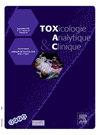三十年来头发检测科学的进步,我们将走向何方?
IF 1.7
Q4 TOXICOLOGY
引用次数: 0
摘要
目的描述头发检测的发展和面临的挑战,并讨论可预见的未来的进展。在过去的30年里,头发检测科学发展迅速;主要是由于仪器仪表的进步,扩大了物质检测和应用。与此同时,它也面临着许多挑战,包括在接受(早期)和解释问题上。随着社会和技术的进步,这门科学的未来正朝着几个有前途的方向发展,包括人工智能和机器学习,这可以使大部分分析和解释结果自动化。毛发分析的发展与分析仪器的进步密切相关。30年前,绝大多数实验室进行头发分析使用GC-MS,而更敏感的技术在少数使用。多年来,情况已经发生了变化,目前大多数实验室使用LC-MS/MS;甚至一些实验室使用成像质谱法(MALDI-TOF)对一根头发进行检测。由头发测试协会组织的能力测试证明了这一点。2001年,93%的参与者使用气相色谱-质谱法,7%使用液相色谱-质谱法;2023年的情况正好相反,当时3%的人使用GC-MS, 97%的人使用LC-MS/MS。先进分析技术的发展使更多的药物及其代谢物得以检测。最初,毛发分析集中在有限数量的物质上(如鸦片、可卡因,后来是大麻)。随着高分辨率技术的引入,头发检测现在包括了更广泛的药物,包括酒精标记物(乙基葡萄糖醛酸盐),或新的精神活性物质(NPS)。此外,在了解药物代谢方面的进展已经允许检测特定的代谢物,提供对使用模式和药物使用时间的见解。这些分析的应用数量多年来一直在增长,它包括不同的领域:法医调查,工作场所药物测试,驾驶执照的重新颁发,儿童监护,临床设置,兴奋剂控制等。在过去的几年里,应用了更灵敏和准确的方法,即使在一次使用后也可以检测到药物的痕迹。因此,适用范围扩大到毒品促进犯罪案件。头发检测的主要挑战一直是(甚至在某些情况下)外部污染和报告假阳性结果的风险。为了解决这个问题已经做了很多研究。最初的方法是引入截止值,然后广泛和/或连续洗涤,分析内源性和次要代谢物。最近,代谢浓度比被应用。未来头发检测的一些主要趋势和潜在方向可能与以下方面有关:(a)技术进步,包括在实验室过程中集成自动化的可能性,这可以简化头发分析,使其更快,更具成本效益;(b)扩大物质检测和代谢物分析;(c)扩大应用;(d)人工智能和学习机的结合,可以在不同方面显著提高头发测试(即外部污染问题);(e)监管和标准化工作、标准化协议和指南将确保实验室之间的一致性和可靠性。总之,在过去的30年里,由于仪器的发展、应用的扩大和接受程度的提高,头发检测取得了显著的进步。随着该领域的不断发展,头发分析的未来看起来很有希望,在准确性、应用和技术集成方面将取得重大进展。本文章由计算机程序翻译,如有差异,请以英文原文为准。
Thirty years of progresses in hair testing science, where do we go?
Objective
Describe the evolution and challenges faced within hair testing and discuss progress to a foreseeable future.
Introduction
Hair testing science has progressed rapidly during the past 30 years; mainly due to advances in instrumentation, expanded substance detection and applications. At the same time, it has faced many challenges, both in acceptance (in the early times) and interpretation issues. As society and technology are progressing, the future of this science is heading in several promising directions including the artificial intelligence and machine learning, which could automate much of the analysis and interpretation of the results.
Results and discussion
The evolution of hair analysis is closely related to advances in analytical instrumentation. Thirty years ago, the vast majority of labs performing hair analysis applied GC-MS, while more sensitive techniques were used in a minority. Over the years, the scenario has been changing and currently most laboratories use LC-MS/MS; even some labs use imaging mass spectrometry (MALDI-TOF) on a single hair. This is demonstrated by the Proficiency Test organized by the Society of Hair Testing. In 2001, 93% of the participants used GC-MS and 7% LC-MS; just the opposite happened in 2023, when 3% used GC-MS and 97% LC-MS/MS. The development of advanced analytical techniques allowed the detection of more drugs and their metabolites. Initially hair analysis focused on a limited number of substances (e.g. opiates, cocaine and later with cannabis). With the introduction of high-resolution techniques in the routine, hair testing now includes a wider array of drugs, including alcohol markers (ethyl-glucuronide), or new psychoactive substances (NPS). In addition, advances in understanding drug metabolism have allowed for the detection of specific metabolites, providing insights into usage patterns and the timing of drug use. The number of applications of these analyses has been growing over the years and it includes different fields: forensic investigations, workplace drug testing, driver's license regranting, child custody, clinical settings, doping control, etc. In the last years, the application of more sensitive and accurate methodologies allowed the detection of traces of a drug even after a single use. Thus, the spectrum of applications was expanded to cases of drug facilitated crimes. The major challenge of hair testing has been and (even in some circumstances) continues to be the external contamination and the risk of reporting false positive results. A lot of research has been done to solve this issue. An initial approach was the introduction of cut-off values, then extensive and/or sequential washes, the analysis of endogenous and minor metabolites. Lately metabolic concentration ratios are being applied. Some key trends and potential directions for the future of hair testing could be related to: (a) technological advancements, including the possibility of the integration of automation in laboratory processes, which could streamline hair analysis, making it faster and more cost-effective; (b) expanded substance detection and metabolite profiling: (c) expanded applications; (d) integration of artificial intelligence and learning machines, which can significantly enhance hair testing in various ways (i.e. external contamination issue); (e) regulatory and standardization efforts, standardized protocols and guidelines will ensure consistency and reliability across laboratories.
Conclusion
In summary, the last 30 years have seen remarkable progress in hair testing, driven by instrumental developments, expanded applications, and increased acceptance. As the field continues to evolve, the future of hair analysis looks promising, with major advancements on the horizon in terms of accuracy, applications, and technology integration.
求助全文
通过发布文献求助,成功后即可免费获取论文全文。
去求助

 求助内容:
求助内容: 应助结果提醒方式:
应助结果提醒方式:


